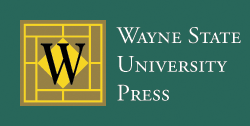Abstract
Regional readers in Australia face real and ongoing challenges when it comes to obtaining the reading matter they truly desire. As scholars, we contend with the related difficulty of tracking and mapping historical reading life in the regions without access to records that are either absent or carefully protected. Navigating this territory, we seek in this article to provide a suggestive account of literary activities in a region much more associated with the hardships of agricultural labor than with reading. Our specific focus is on readers in the Mallee region of northwest Victoria and what we term the “literary infrastructures” made available to them over time, since the early years of colonization. These infrastructures that enable, promote, and support reading publics have offered a surprisingly diverse but also highly uneven access to books and reading cultures in the Mallee. Our study reveals the specificity of the Mallee as a site of institutional and community interest that mobilized specific visions and assumptions of what Mallee people need and want. We illuminate the ways in which external actors and organizations constructed an image of the Mallee as suffering, ravaged, and worthy of pity, leading to charity drives and mobile library services that sought to compensate for the lack of available reading materials. This article shows how readers were imagined, solicited, and serviced by literary infrastructures. Although the Mallee may not have identified as a literary community in the early twentieth century, it did regard itself as a reading community, albeit one shaped by isolation.
Recommended Citation
Magner, Brigid and Potter, Emily
(2021)
"Imagining Mallee Readers: Literary Infrastructures of a Regional Community,"
Antipodes: Vol. 35:
Iss.
1, Article 17.
Available at:
https://digitalcommons.wayne.edu/antipodes/vol35/iss1/17
